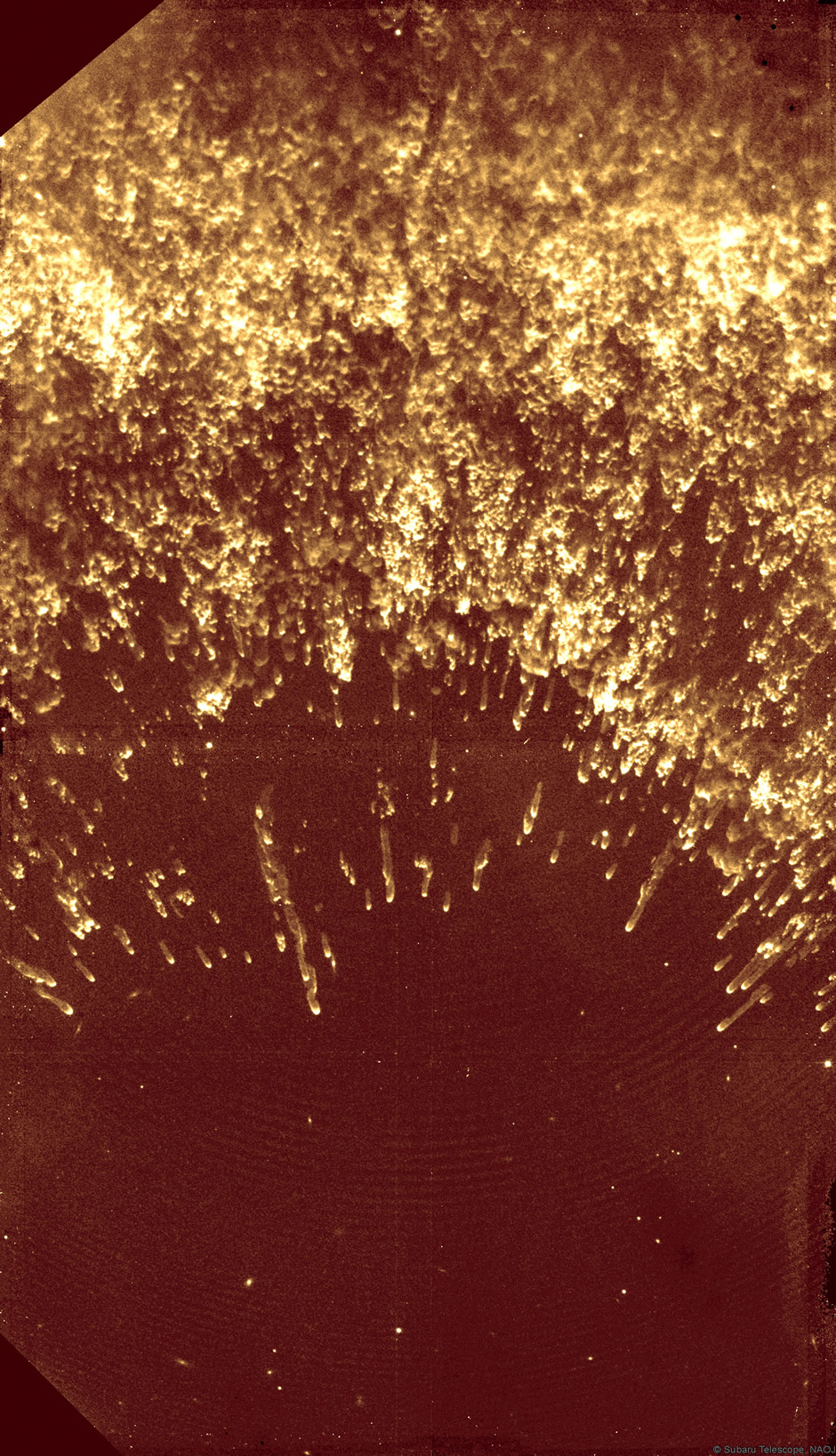Fireworks Exploding in the Night Sky
Astrophotography・

The Helix Nebula is visually an extremely large planetary nebula with an apparent angular size of approximately 25 arc-minutes (almost as large as the Full Moon). Because it is located relatively close, only 219 parsecs away, the details of the internal structures of the planetary nebula can be revealed. By imaging it with MOIRCS on the Subaru Telescope, we found that this planetary nebula is composed of numerous cometary knots. What’s more, at the inner part of the nebula, the cometary knots clearly show a distinct tadpole shape; while moving to the outer part of the nebula, the shape becomes vague and the tails disappear. It is thought that the stronger wind in the inner part causes interactions with dense material, driving the tadpole shapes.
Text by: Mikako Matsuura (Cardiff University)
Image Data
| Object | Helix Nebula (NGC 7293) |
|---|---|
| Telescope | The Subaru Telescope |
| Instrument | MOIRCS (Multi-Object Infrared Camera and Spectrograph) |
| Wavelength | 2.12 microns |
| Exposure | 700 seconds |
| Date | June 25, 2007 |
| Observer | MOIRCS Team | Copyright | National Astronomical Observatory of Japan |